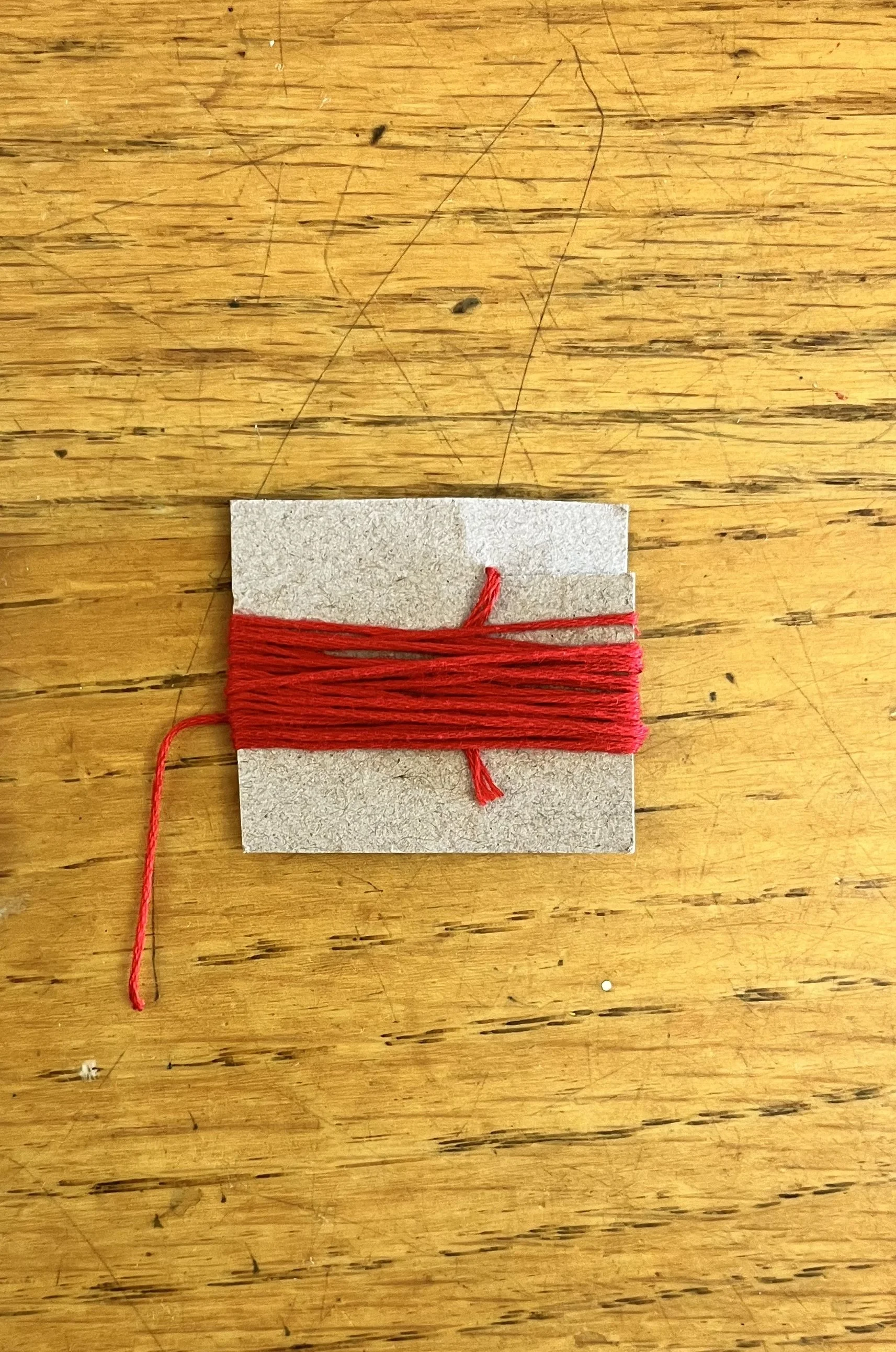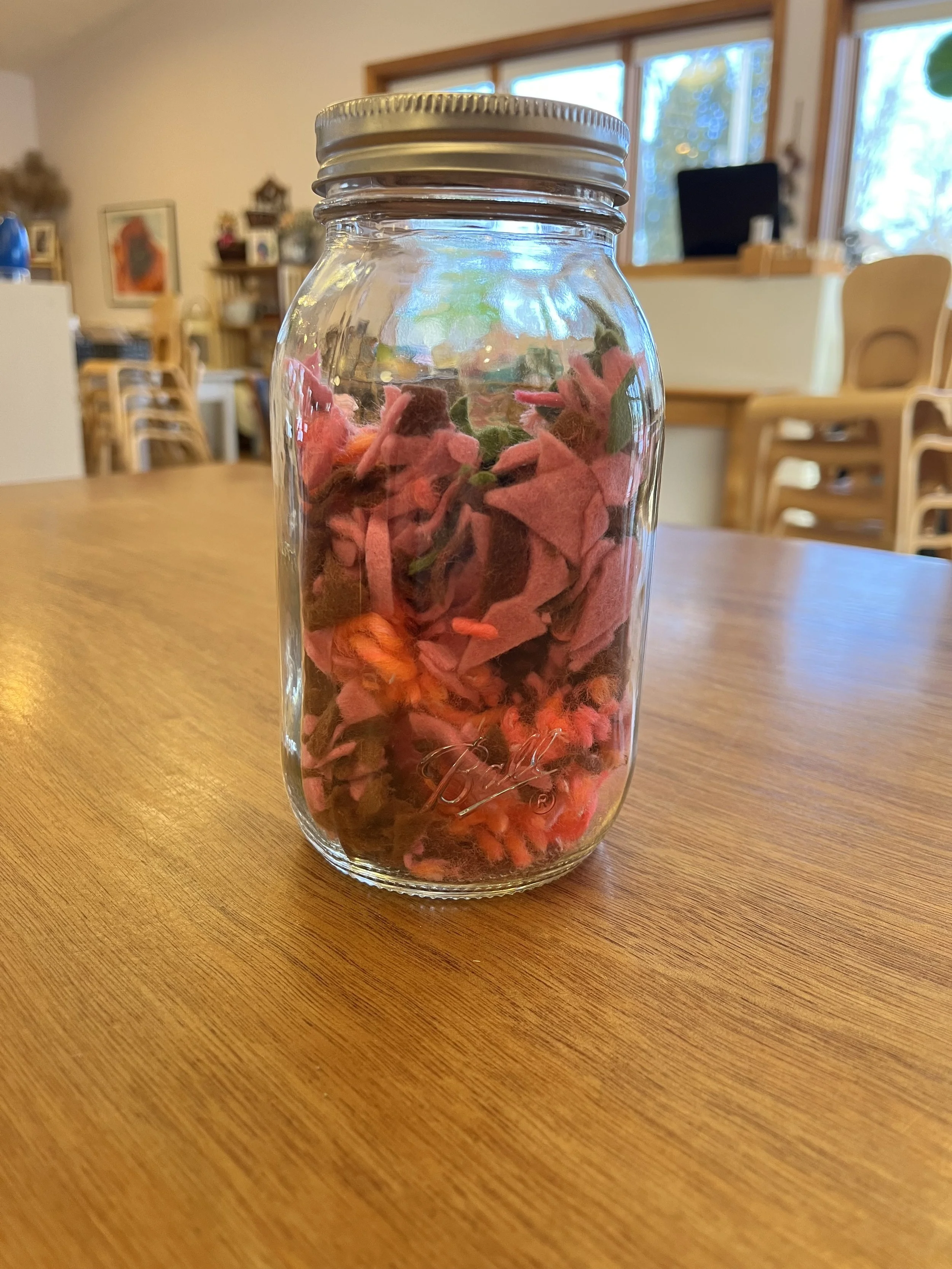Sustainability in Sewing
Although sewing is wonderful, educational, and beneficial to the development of every child, it can have a larger carbon footprint than any other work in the classroom. With each product being used one time, and plastic potentially in each item used, it is important to acknowledge how we navigate our sewing works to minimize our impact on the planet. Luckily, there are numerous, creative ways that we can reduce our usage on harmful products, and encourage our students to do the same.
Create your own bobbins
Instead of purchasing the white, plastic bobbins to wind embroidery thread, look through your recycling can for a cardboard box to reuse. Cut out a small rectangle about 2”x2” and cut a small slit towards the top. This will act the same way as the plastic bobbin, while using what you already owned.
Save bits of floss and other waste to use as stuffing
After the child gets done typing off a knot and trimming their thread, invite them to save the scraps in a special classroom container full of other loose ends to use as stuffing for their pillows. Try using a clear jar so the children can see their collection grow and get excited about recycling.
Also try to save any abandoned projects that may have been left behind. If only a few stitches have been stitched, you can undo the work for them by cutting off the thread and undoing the stitches (be sure to save the threads!), and put it back on the shelf for another child. Or if the work is crinkled with really tight stitches, you can cut up the entire felt project into very small pieces and add it to the jar.
Invite your children to learn about the jar and why you are adding scraps to it, and ask them if they have any ideas on things that they throw away but could add to the jar instead. When they feel part of the process, their excitement will grow about all the possibilities of recycling and reusing.
Explain how sewing builds sustainable habits
As a child wants to learn more about sewing, invite a conversation about sustainable practices and real applications of sewing at home. Share ideas such as that they are learning how to sew on a button so that they know how to do it in case theirs falls off. When they learn the whip stitch, share that they can use this stitch to fix a hole in their clothes if it rips. This knowledge not only empowers their ability to make sustainable choices (and means they do not have throw away their favorite shirt), but also empowers them to use sewing in other ways beside the work directly presented to them.
Anytime at school that someone’s clothes rip, invite them to find a needle, matching thread, and scissors to repair it themselves!
We are excited to keep this list growing as more ideas come to light about all the different and creative ways that Thread the Needle, the classrooms, and each of us can find new ways to reduce, reuse, and recycle to minimize our environmental impact on the planet.


